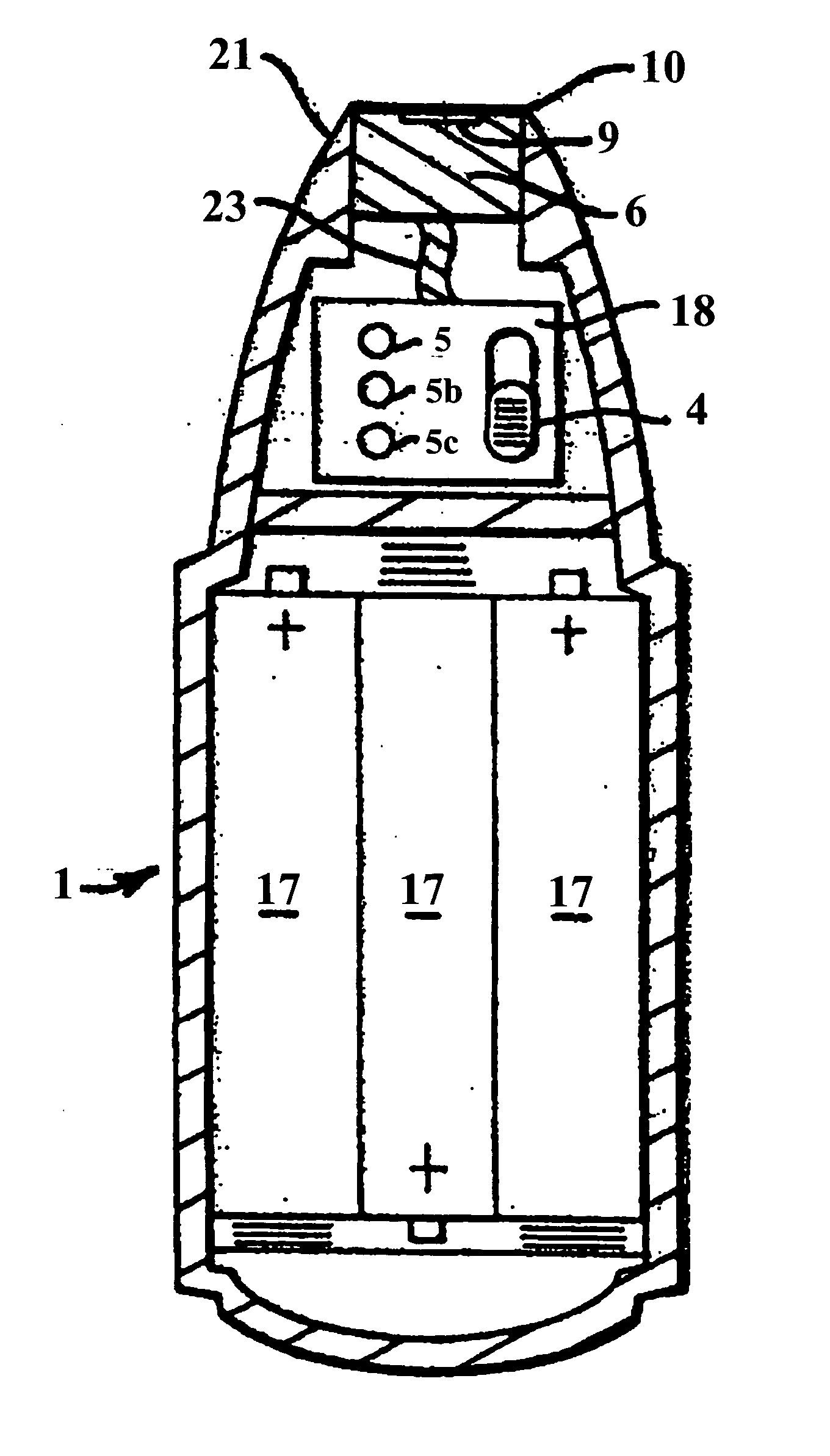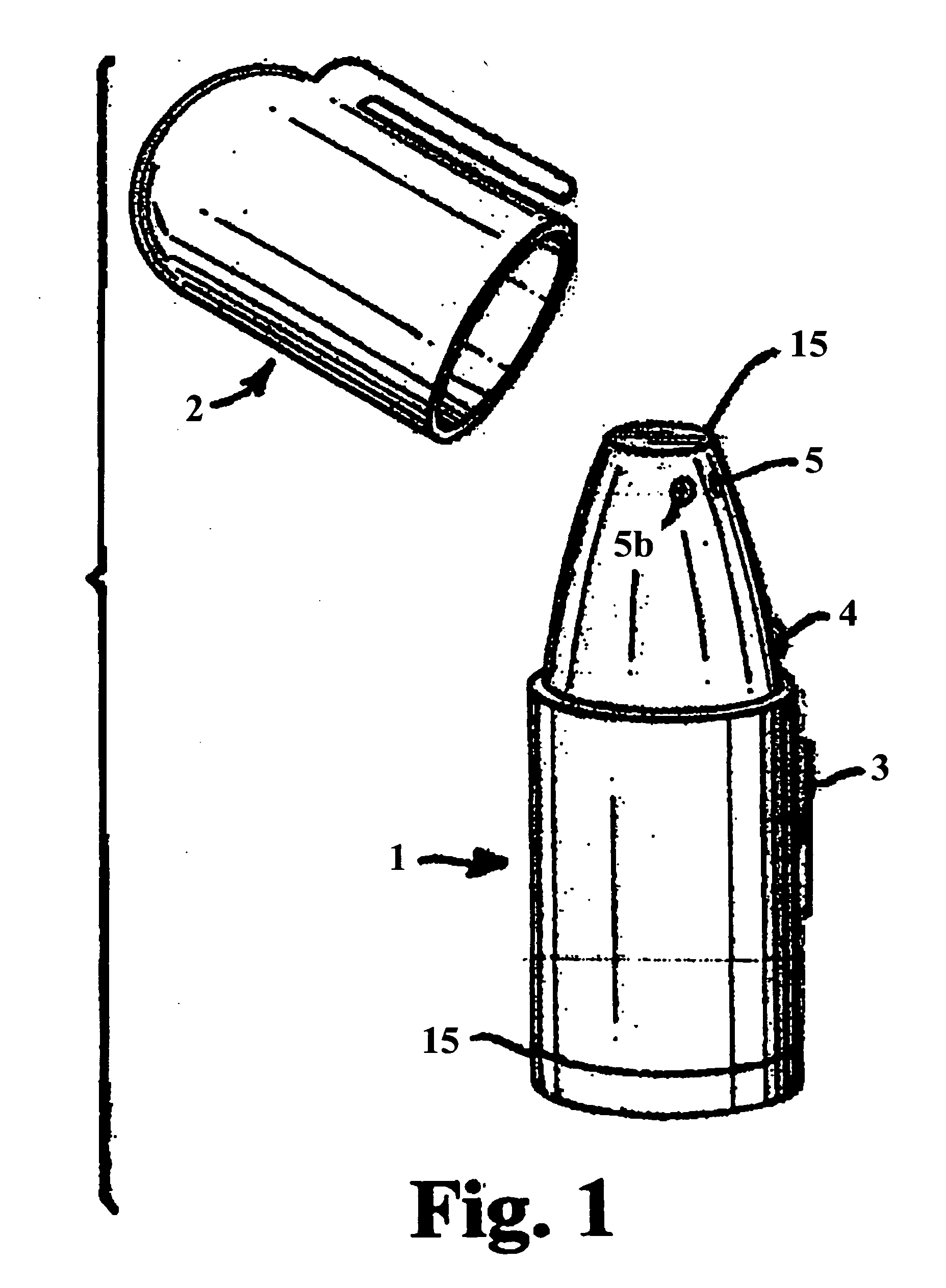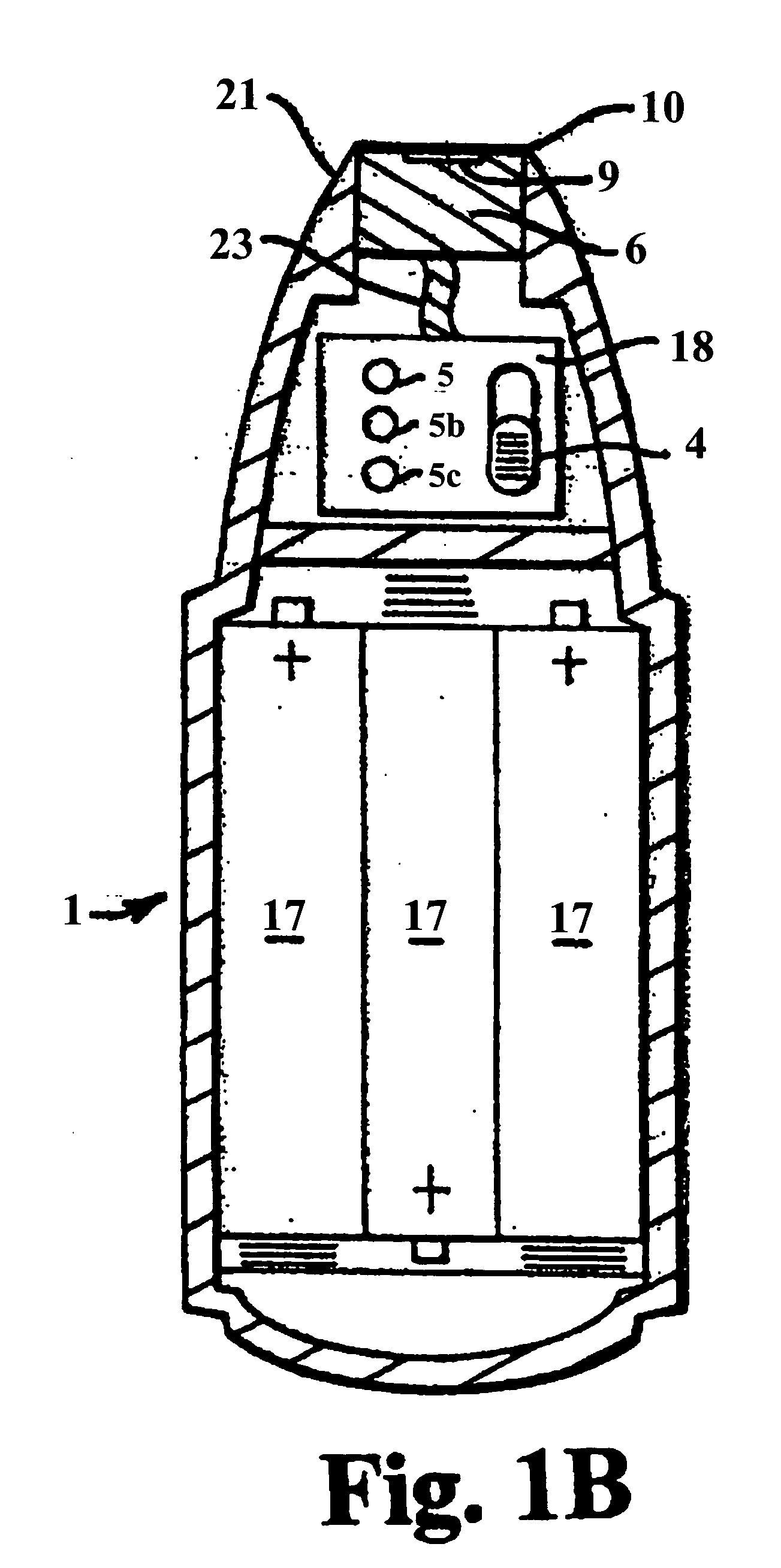Medical device and method for treating skin disease
- Summary
- Abstract
- Description
- Claims
- Application Information
AI Technical Summary
Benefits of technology
Problems solved by technology
Method used
Image
Examples
third embodiment
[0053] The third embodiment as shown in FIG. 4 that omits the positioning means 11 and the grid 10 of the above mentioned embodiment. In this case, a light indicator 5 that will be turned on or will flash or will change color after the heater reaches the selected temperature will be included in this apparatus to replace the omitted elements 10 and 11 to ensure only said best effective temperature is used. Also in this case said heater is fixed at said contact end and said intermittent application of heat is performed manually. It would be possible to omit the light indicator 5 if a strong and stable power source, together with a good heat-transfer material for the heat transfer surface are used, providing rapid heating of the transfer surface to the desired temperature, and maintaining of that temperature.
[0054] The fourth embodiment as omits the temperature selector of the second embodiment. In this embodiment the heater is fixed at one exact best effective temperature, selected fo...
fifth embodiment
[0055] In a fifth embodiment, as shown in FIG. 5, a heat-conducting liquid is used to maintain the temperature within the heat transfer surface which contacts the user's skin. The liquid used is preferably one with a high specific heat, such as oils of various types. The material need not be liquid at room temperature, so long as it liquefies at the best effective temperature. The advantage of this method is that the temperature and the sensing device may be located at any point within the liquid, or in proximity to the liquid, simplifying the design and manufacture of the apparatus. The high specific heat of the liquid, as well as the mobility of the molecules within the liquid, produces a uniform temperature within the body of the liquid. In contrast, metals may exhibit a thermal gradient between the area in proximity with the heater and the area in proximity with the skin, making accurate temperature control more difficult. Referring to FIG. 5, the heating element 6 is immersed i...
sixth embodiment
[0057] In a sixth embodiment, as shown in FIG. 6, laser, microwave, sonic sound, and infrared radiation may also be used as a heat source for this invention. Such indirect heat sources require special means to detect heat at the surface of the skin. One recommended method is to incorporate the temperature transducer in a wall means 12 located at the contact end of the apparatus, as shown in FIG. 6, which depicts a sixth preferred embodiment of the invention. In this case, the heater source will be set behind the opening at the contact end. The heater should provide a heating energy that is high enough to heat the skin to an effective temperature within about 1-2 seconds. A wall means 12, such as a grid, is located at this opening to prevent direct contact of the skin to the heat source 6, as well as to prevent the user from accidentally placing his fingers, or other objects, in contact with the heat source burning. In this embodiment, the temperature transducer 9 should be located w...
PUM
 Login to View More
Login to View More Abstract
Description
Claims
Application Information
 Login to View More
Login to View More - R&D
- Intellectual Property
- Life Sciences
- Materials
- Tech Scout
- Unparalleled Data Quality
- Higher Quality Content
- 60% Fewer Hallucinations
Browse by: Latest US Patents, China's latest patents, Technical Efficacy Thesaurus, Application Domain, Technology Topic, Popular Technical Reports.
© 2025 PatSnap. All rights reserved.Legal|Privacy policy|Modern Slavery Act Transparency Statement|Sitemap|About US| Contact US: help@patsnap.com



